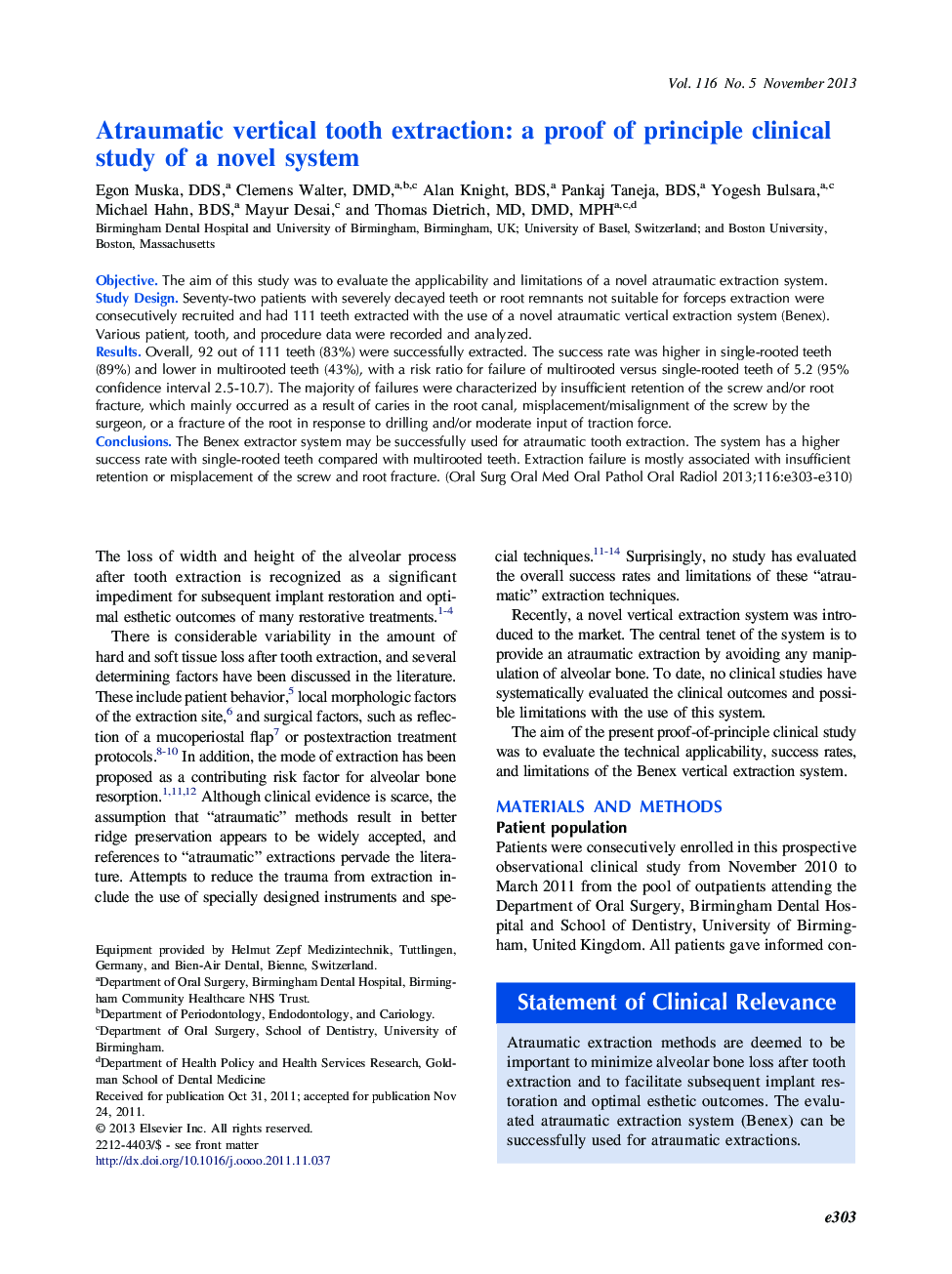| Article ID | Journal | Published Year | Pages | File Type |
|---|---|---|---|---|
| 6056564 | Oral Surgery, Oral Medicine, Oral Pathology and Oral Radiology | 2013 | 8 Pages |
ObjectiveThe aim of this study was to evaluate the applicability and limitations of a novel atraumatic extraction system.Study DesignSeventy-two patients with severely decayed teeth or root remnants not suitable for forceps extraction were consecutively recruited and had 111 teeth extracted with the use of a novel atraumatic vertical extraction system (Benex). Various patient, tooth, and procedure data were recorded and analyzed.ResultsOverall, 92 out of 111 teeth (83%) were successfully extracted. The success rate was higher in single-rooted teeth (89%) and lower in multirooted teeth (43%), with a risk ratio for failure of multirooted versus single-rooted teeth of 5.2 (95% confidence interval 2.5-10.7). The majority of failures were characterized by insufficient retention of the screw and/or root fracture, which mainly occurred as a result of caries in the root canal, misplacement/misalignment of the screw by the surgeon, or a fracture of the root in response to drilling and/or moderate input of traction force.ConclusionsThe Benex extractor system may be successfully used for atraumatic tooth extraction. The system has a higher success rate with single-rooted teeth compared with multirooted teeth. Extraction failure is mostly associated with insufficient retention or misplacement of the screw and root fracture.
